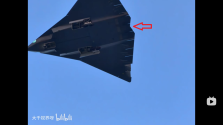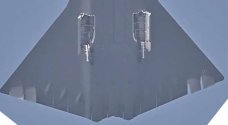Of course it won't be likely to happen, so I just mean imaging some stupid things, don't take my words too serious. But as long as CAC keeps some high maneuverability on J36, it will never be boring——I think you can understand that.
Of course, the latest fighter jet that looks like something from a science fiction movie is boring as an old lady passing by over the airport?

It makes me feel like taxpayers are paying more than they should be paying.

Forgot to tell you, my favorite air battle was probably in the 1930s, and BZ tactics and strategic bombing ruined everything.

The recent performance of the J36 should be more than it should be. The fast rolling of such a wide fuselage still exceeds my expectations.
And we haven’t seen the huge action tubes on the tail react yet, and there are no changes to the TVC. We look forward to showing us the latest aerodynamic research results of the J36 at some point.



